http://lins.pbworks.com/w/file/106056036/LFS101x.2.pdf
專有名詞中英文都要背
第三章
Learning Objectives
partitions分割磁區檔案系統 filesystems啟動程序
Section 1: Linux Filesystem Basics
>Filesystems方法 架構
>Different Types of Filesystems Supported by Linux
ext234...
flash(usb)
Databas
Partitions and Filesystems
>是什麼?
A partition is a logical part of the disk, whereas a filesystem is a method of storing/finding files on a hard disk (usually in a partition).
>先partition(邏輯)到filesystems(組織)
Mounting Parameters掛在系統的參數(作業系統放在...)
>The Filesystem Hierarchy Standard
建立了標準Filesystem Hierarchy Standard, or FHS檔案系統組織的標準
>Linux uses the ‘/’:沒有磁碟機代號
>大小寫有分: /boot, /Boot, and /BOOT
>習題:
A possible correct full path for a "photo.jpg" file on a Linux system is /data/user1/images/photo.jpg.
//////////////////////////////////////////////////////////////////////////
Section 2: The Boot Process
>X Window System:xwindow 圖形界面系統
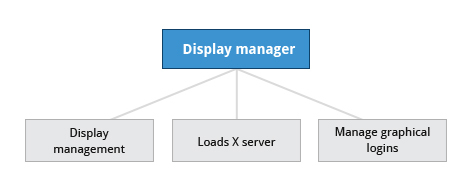
ctrl alt+F123456....七部電腦在跑
>The Boot Process程序
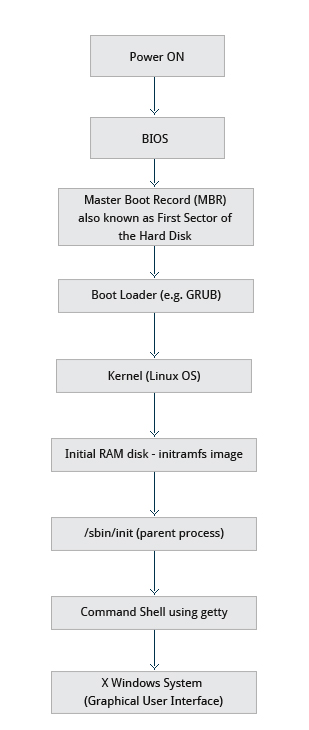
BIOS - The First Step
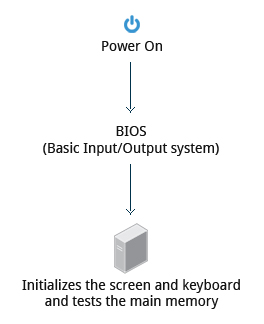
x86-based(cp)Basic Input/Output System (BIOS)*專有名詞要背
啟動硬體,所以又稱為 POST (Power On Self Test)
Master Boot Records (MBR) and Boot Loader
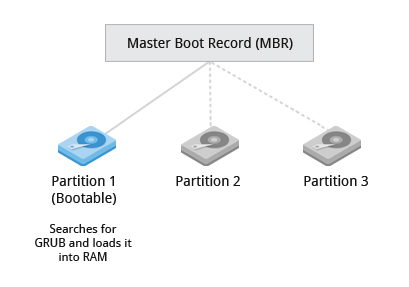
可擴展的Extensible Firmware Interface or EFI/UEFI systems
Once the POST is completed, the system control passes from the BIOS
to the boot loader. The boot loader is usually stored on one of the
hard disks in the system, either in the boot sector (for traditional BIOS/MBR systems) or the EFI partition (for more recent (Unified) Extensible Firmware Interface or EFI/UEFI
systems). Up to this stage, the machine does not access any mass
storage media. Thereafter, information on the date, time, and the most
important peripherals are loaded from the CMOS values (after
a technology used for the battery-powered memory store - which allows
the system to keep track of the date and time even when it is powered
off).
A number of boot loaders exist for Linux; the most common ones are GRUB (for GRand Unified Boot loader) and ISOLINUX
(for booting from removable media). Most Linux boot loaders can present
a user interface for choosing alternative options for booting Linux,
and even other operating systems that might be installed. When booting
Linux, the boot loader is responsible for loading the kernel image and
the initial RAM disk (which contains some critical files and device
drivers needed to start the system) into memory.
兩個步驟
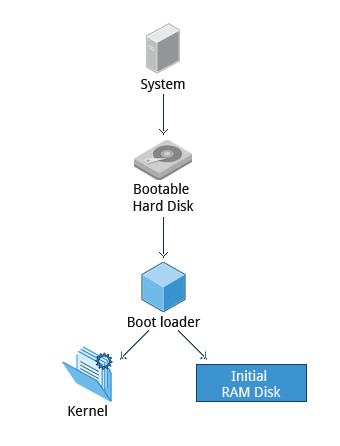
The Linux Kernel
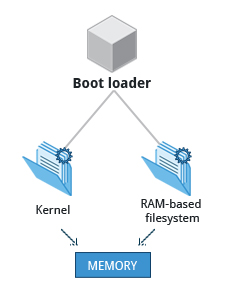
The Initial RAM Disk
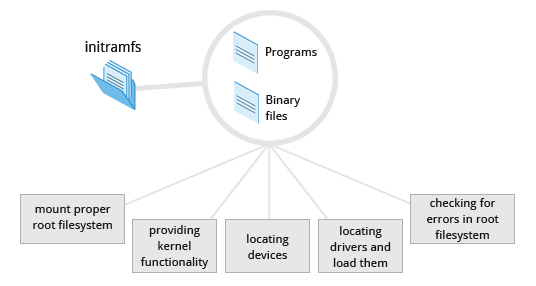
/sbin/init and Services
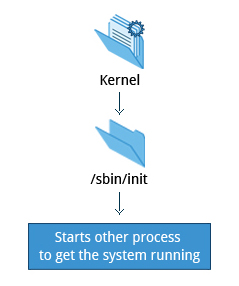
Text-Mode Login文字界面
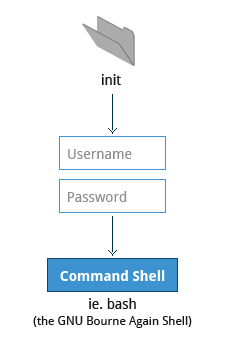
X Window System

More About the X Window System
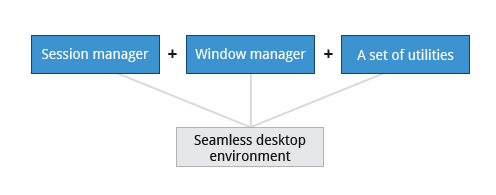
問題:
Which one of the following component actually loads Linux?
Boot loader
_______ is responsible for starting system and network services at boot time.init
//////////////////////////////////////////////////
Section 3: Linux Distribution Installation
Choosing a Linux Distribution
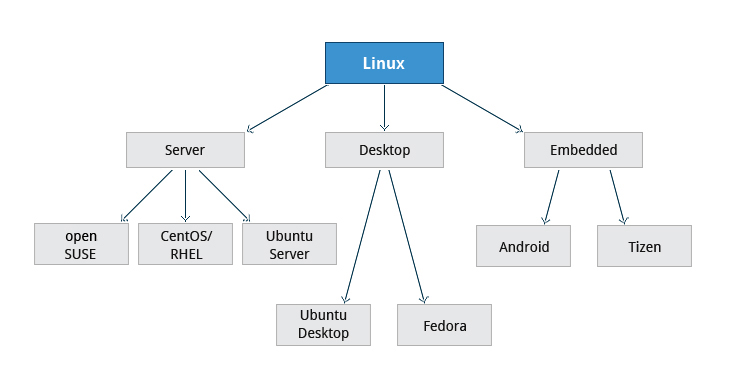
伺服器 桌面 embedded嵌入的來源
Questions to Ask When Choosing a Linux Distribution
安裝之前會問的問題
- What is the main function of the system? (server or desktop)要哪種系統
- What types of packages are important to the organization? For example, web server, word processing, etc.哪些套件是一定會用到的
- How much hard disk space is available? For example, when installing Linux on an embedded device, there will be space limitations.硬碟容量(模仿成硬碟來作)
- How often are packages updated?多久要更新
- How long is the support cycle for each release? For example, LTS releases have long term support.多久一次release
- Do you need kernel customization from the vendor?kemel要不要客製化
- What hardware are you running the Linux distribution on? For example, X86, ARM, PPC, etc.
- Do you need long-term stability or short-term experimental software?要長期支援還是短期
More About Planning in Linux Installation
要哪些軟體伺服器
安裝資料來源
Linux Installation: Install Source
Linux Installation: The Process
Linux Installation: The Warning
先備份在安裝
問題:
///////////////////////////////////////////////////////////////
Summary
You have completed this chapter. Let’s summarize the key concepts covered:
- A partition(分割-磁碟分區) is a logical part of the disk.
- A filesystem is a method of storing/finding files on a hard disk.
- By dividing the hard disk into partitions, data can be grouped and separated as needed. When a failure or mistake occurs, only the data in the affected partition will be damaged, while the data on the other partitions will likely survive.
- The boot process has multiple steps, starting with BIOS, which triggers the boot loader to start up the Linux kernel. From there the initramfs filesystem is invoked, which triggers the init program to complete the startup process.
- Determining the appropriate distribution to deploy requires that you match your specific system needs to the capabilities of the different distributions.
ls
vi